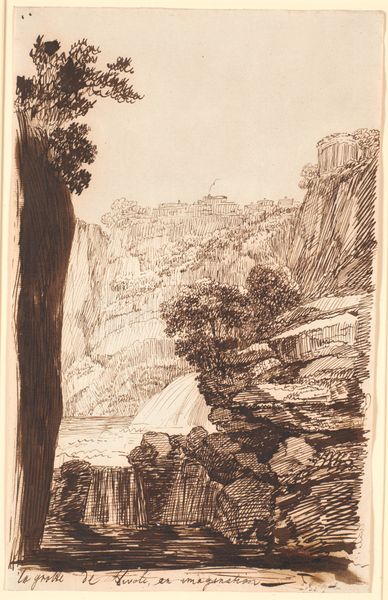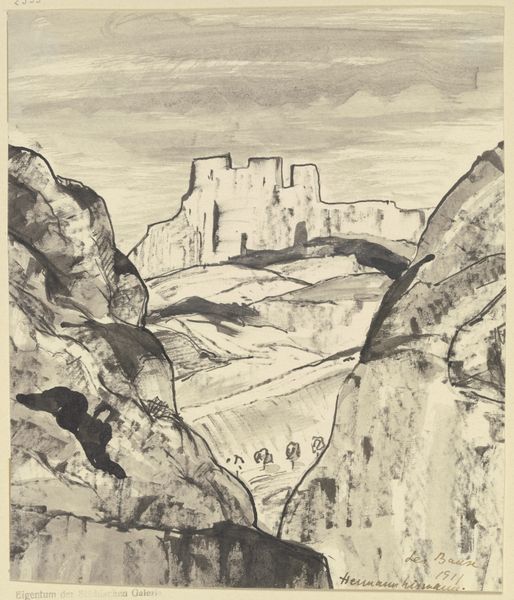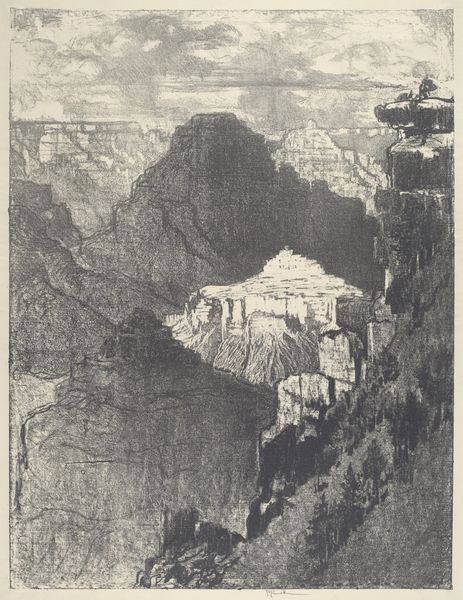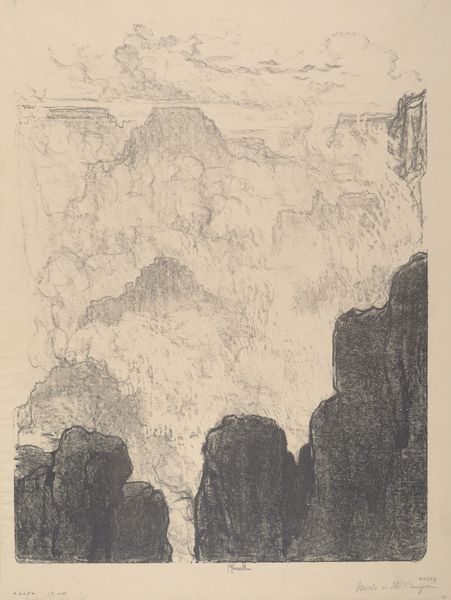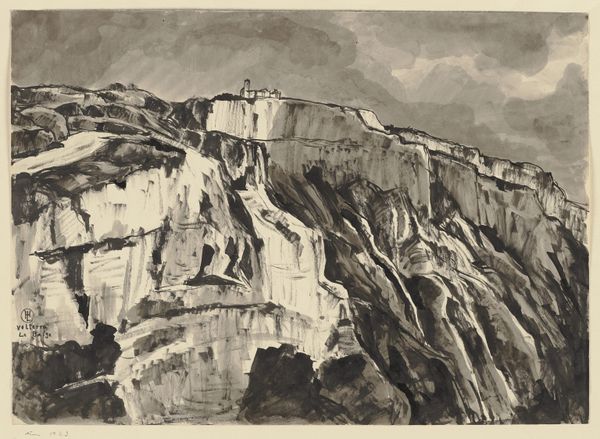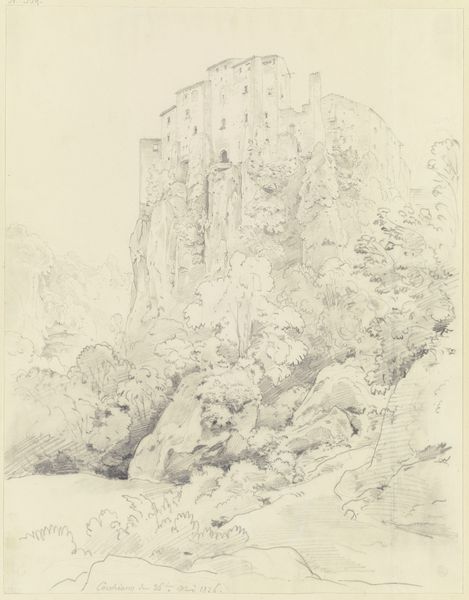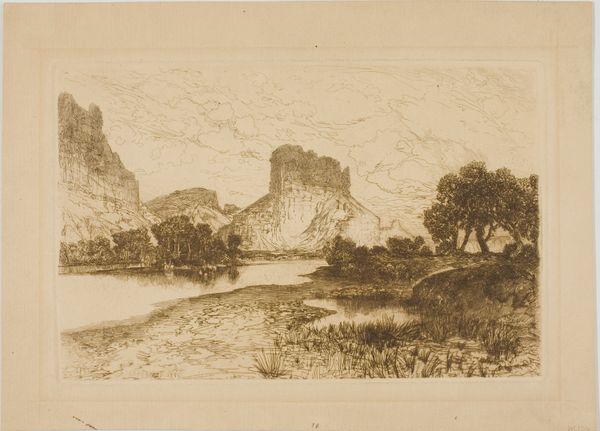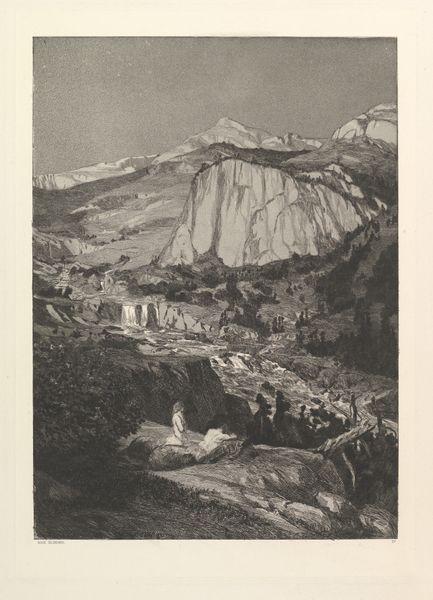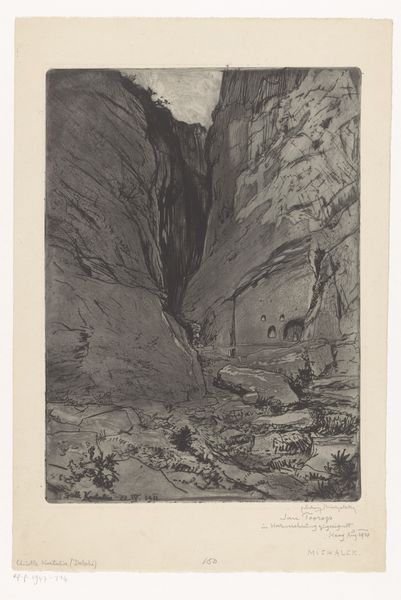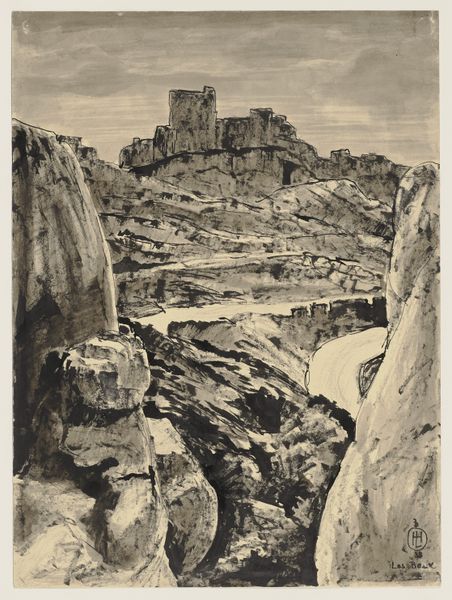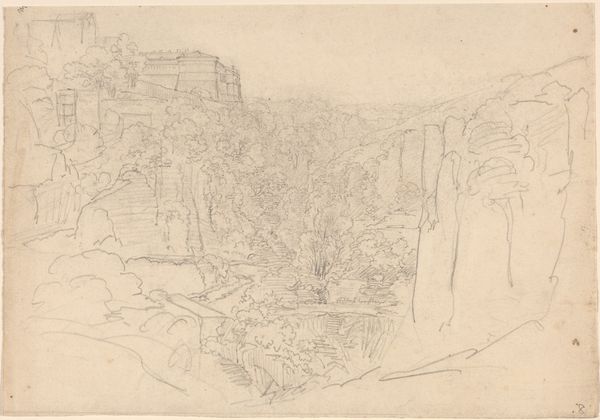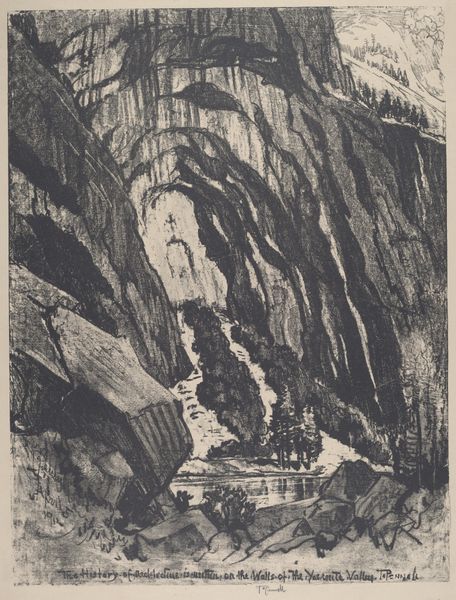
drawing, print, etching
#
pencil drawn
#
drawing
# print
#
etching
#
pencil sketch
#
landscape
#
regionalism
#
realism
Dimensions: plate: 17.5 x 12.1 cm (6 7/8 x 4 3/4 in.) sheet: 22.8 x 17 cm (9 x 6 11/16 in.)
Copyright: National Gallery of Art: CC0 1.0
Curator: This is "Sketch on Apache Trail, Arizona," an etching and drypoint by George Elbert Burr, created around 1929. It captures a striking vista of the American Southwest. What’s your immediate take on this? Editor: It's a somber scene. The meticulous detail feels like a monument frozen in time, a testament to a world that dwarfs us. There’s an undeniable sense of romantic desolation in this depiction of nature's grandeur. Curator: I’m drawn to the intensive labor of such detailed work. Think of the manual craft involved in each tiny etched line. The plate itself would have taken many hours to prepare, reflecting not only the beauty of the landscape, but also a social reality about work, skill, and value within the art market. Editor: Absolutely. And notice how the artist renders the rock formations? Those are classic symbols of steadfastness. The hardy cacti and gnarled tree—archetypes of resilience. This land tells a story of adaptation, and even defiance. It's about enduring through time. Curator: The act of etching and printing adds another layer. As a multiple, each impression speaks to mass production, in its own small way. Though framed as a scene of sublime nature, consider the access to this very image by audiences who would never get to visit the actual locale, filtered through art consumption. Editor: That’s true, this becomes a shared cultural experience. And yet, the dark tones suggest something beyond postcard prettiness. Is there a darker side to romanticizing the ‘Wild West’, a reminder perhaps, of displaced indigenous populations? Even the title itself hints at that untold story… Curator: Indeed. Burr lived in an era of mass urbanization; prints like this would speak to desires for simpler living and nature connection but made possible, ironically, by modern industry. What might a critical viewing of the landscapes by Burr reveal regarding natural resources or land ownership, considering both extraction and visual commodity? Editor: Seeing the rugged landscape anew. This wasn't just untouched land but territory that shaped the identity, mythologies and memories tied to its original inhabitants. Fascinating. Curator: It provides much to reflect upon concerning materiality and visual narrative. Editor: Agreed. There’s always another level to uncover, from process to embedded cultural memories.
Comments
No comments
Be the first to comment and join the conversation on the ultimate creative platform.
